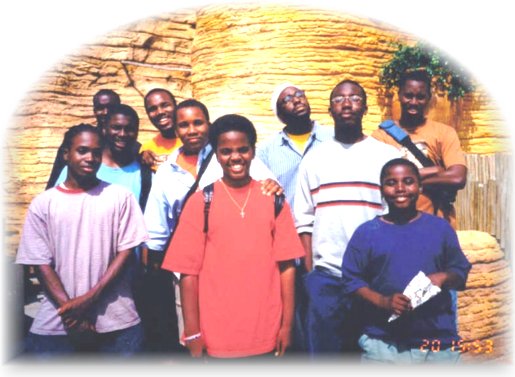|
A Typical Day at Genesis |
|
Let’s shadow Peter, a seven-year-old third grader at Genesis Christian Academy. Peter arrives at school at ten to eight. There are a total of six students in his homeroom class. His homeroom is the elementary science room. For the next six weeks, Peter is one of three third graders responsible for morning feeding of the reptiles, fish and small mammals in his homeroom. He has been shown the exact location and proper use of all equipment. He has a specific routine for measuring and weighing food, feeding, watering, and marking a chart on each cage to document his activity. Peter’s homeroom class created all of the charts used to document feeding the first week of school, as part of orientation. Peter’s third grade schedule looks like this: Today is Monday, and this is the third week in the semester, so classes for this week are held in a 3-4-5-6-7-1-2 sequence:
Today in homeroom, the class prays,
Peter’s teacher takes attendance, and the class plays a Bible
drill game in two teams. Sometimes they sing praise and worship
songs, or they will watch a portion of a Christian video. This week period 3 is only an hour and
one half. However, next week and the week after Language Arts will
be an hour and forty-five minutes, and one and one half hours,
respectively. Peter and his classmates will use 45 minutes of the
next six class periods to edit the tape and produce a one half hour
show. During one art class over the next two weeks, Peter’s class
will make posters advertising the screening of their documentary.
All student films are run during the lunch hour every day in the
elementary Language Arts room. All students from third through
twelfth grade are required to turn in critiques of at least three
student projects on the first of each month. In addition to editing
his documentary next week, Language Arts class for Peter will
include learning Latin and Greek prefix and suffix derivatives, and
a group reading of an elementary biography of Nelson Mandela. Time management is part of
the orientation during the first weeks of school. Peter has learned
how to sign up for activities, enter them on both his and the
activity coordinator’s schedule on his computer, and hand write
them in his daily planner. In order to assure balance, each student
is required to turn in a lunch sheet to the homeroom teacher,
documenting his activity. Teaching modules and class subjects are the same in both elementary and high school grades. Of course, each discipline will incorporate a greater variety of teaching units. For example, high school Language Arts incorporates etymology, Latin, Greek, research techniques, review of grammar, World, American and Christian literature, creative writing and SAT preparation. Every other discipline includes advanced placement and SAT subject matter testing preparation in the eleventh grade. Extensive college admission guidance counseling will be provided. In the twelfth grade
students will engage in approximately 300 hours of ministry. These
supervised placements will vary and may include overseas missions,
Baltimore and DC area shelters, a teaching internship at the school,
or performance outreach ministry to other schools.
|
Copyright (c) Genesis Christian Church 2014. All rights reserved.


